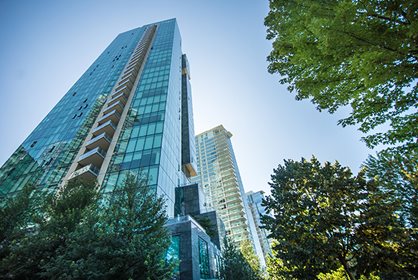Tuesday October 04, 2016
Why are association rules necessary?
 High-rise living often appeals to many people for the wealth of amenities, concierge-level services and unique culture. But with this lifestyle comes challenges. Close quarters and the need for residents to exercise mutual respect can sometimes lead to friction and conflict – this is when formal policies need to come into play.
High-rise living often appeals to many people for the wealth of amenities, concierge-level services and unique culture. But with this lifestyle comes challenges. Close quarters and the need for residents to exercise mutual respect can sometimes lead to friction and conflict – this is when formal policies need to come into play.“Part of the draw for high-rise living is becoming part of a tightly-knit community,” said Christopher L. Pappas, senior vice president at FirstService Residential. “But bringing together a diverse group of people introduces an array of varying opinions, lifestyles and ways of conducting oneself. This can be a great thing, but to prevent the potential negative effects of natural differences, concrete policies are a necessity for the association.”
These policies, rather than being hindrances, are a tool for creating harmony among residents. The challenge is getting there – many of the major issues residents face are complex and require the help of a property management company. A great company not only has experience, but also a vast knowledge of the law and a sense for what works best for residents.
With that in mind, let’s take a look at some of the areas where concrete policies can help create order within a high-rise building.
Four high rise-association rules to implement in your community
-
Pets
There’s a pet for every kind of person, but not every pet is viable for high-rise living. Draft policies that define what kinds of pets are acceptable, including animal types, size and weight. Make your clean-up policies clear. Enforce the rules fairly and equitably.
The key here is communication – you’ll want to make sure that all residents know the association rules so they can comply. Remember that there will be exceptions, too – grandfathering in non-compliant pets after a new policy shift is part of a common-sense approach. But keep in mind that federal law requires that all service animals be accommodated, at no cost to the owner. For a full discussion, read our pet policy article.
-
Short-term rentals
The sharing economy is bustling. But allowing owners and renters to sublet their spaces in the short-term (often through online sites like Airbnb) might not always be a good fit for your high-rise community.
Short-term renters are not subject to the vetting that long-term residents of the community undergo. They may not know the fire safety codes and other rules in the community that keep everyone safe, and that can be dangerous in an emergency. On the other hand, unit owners living in popular vacation areas might want to have the option to rent their space while their not at home. Not only can this generate extra income for the unit owner, but it can also increase property values – making the property more marketable to those looking to make income from their unit. Consider surveying your residents and then implementing the right short-term rental policy for your community.
If your community chooses to ban short-term rentals, don’t be afraid to enforce compliance with penalties. Likewise, create procedures that prevent unauthorized people from entering the premises, and document those instances when they happen to occur. As with all policies, open communication with residents is the key to successful implementation.
-
Flooring
Most problems with a neighbor probably boil down to a single word: noise. And while you can address this issue with ordinances regarding quiet hours and music/television volumes, real problems arise when the problem is the flooring itself.
Some flooring materials make every step sound like a thunderclap, which can make life unbearable for people living downstairs. So what to do? Draft a policy that clearly outlines what types of flooring are acceptable and which ones aren’t.
Board members who would like to establish an effective flooring policy should lean on the expertise of architects and acousticians who can go beyond defining acceptable flooring types. These experts lend real knowledge in terms of how the floor should be constructed to minimize sound. Additionally, your new policy should include details about the construction approval process and who can complete the work—most associations require unit modifications to be performed by a licensed and insured contractor (refer to your association’s governing documents for specifics).
Clearly communicate the new rules to your residents and you’re on your way to having a flooring policy that keeps the building quiet – and fellow neighbors happy. For a deeper dive into how to implement a comprehensive flooring policy, check out this article.
-
Smoking
The hazards of smoking are undeniable. It’s the leading cause of preventable death throughout the U.S. and Canada. But increased fire risks create even more immediate danger for residents living in a high-rise building. That, among other reasons, is why so many buildings are going smoke-free...a step you may want to consider if you haven’t already done so.
But how do you get there without lighting a fire under angry residents? Just take it step-by-step – form a committee to explore the issue (including homeowners, board members, public health workers and medical professionals). Seek feedback from your residents. You’ll want to ask them if they’ve experienced second-hand smoke, if they are smokers themselves and how they feel about a smoke-free environment.
Go to your governing documents and see what it takes to make the non-smoking shift. And then – you guessed it – communicate the policy to your residents clearly. You can get more tips on how to implement this type of policy here.
For additional help defining and implementing policy for your high-rise building, reach out to FirstService Residential, North America’s property management leader.